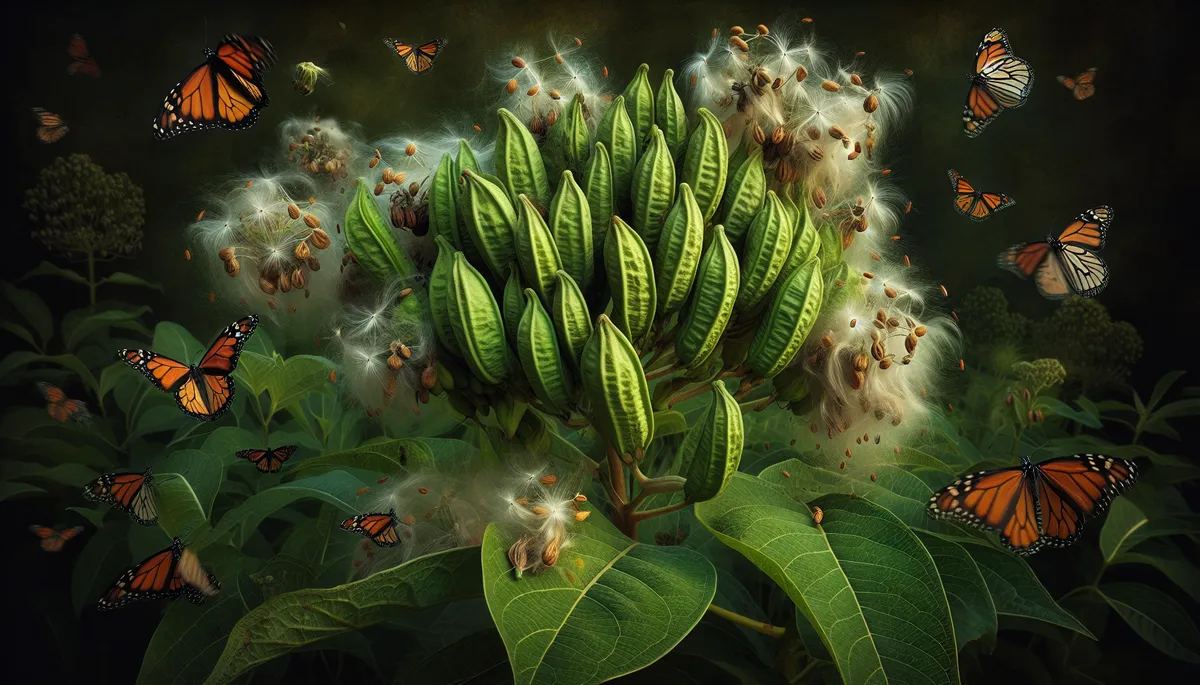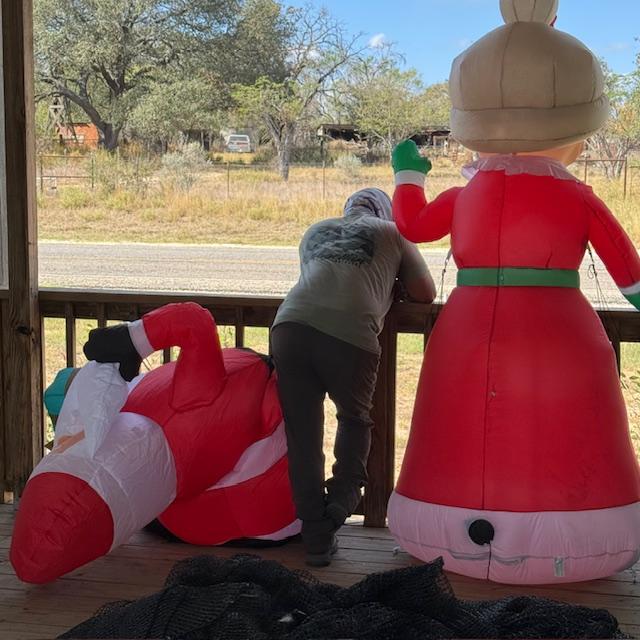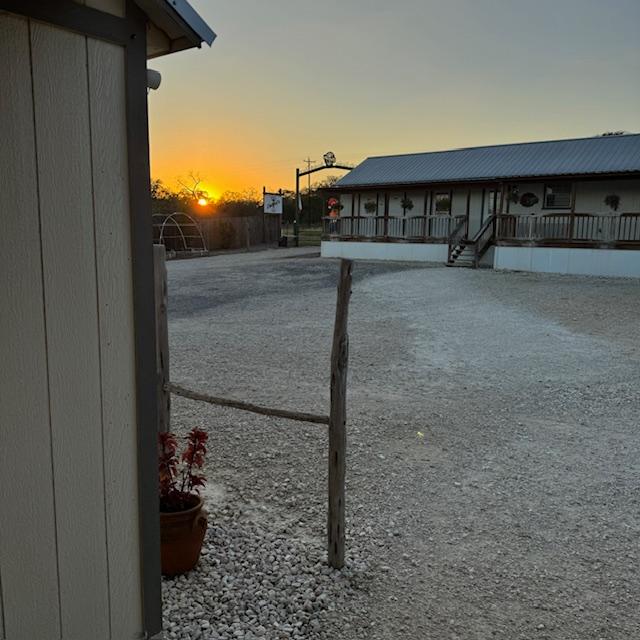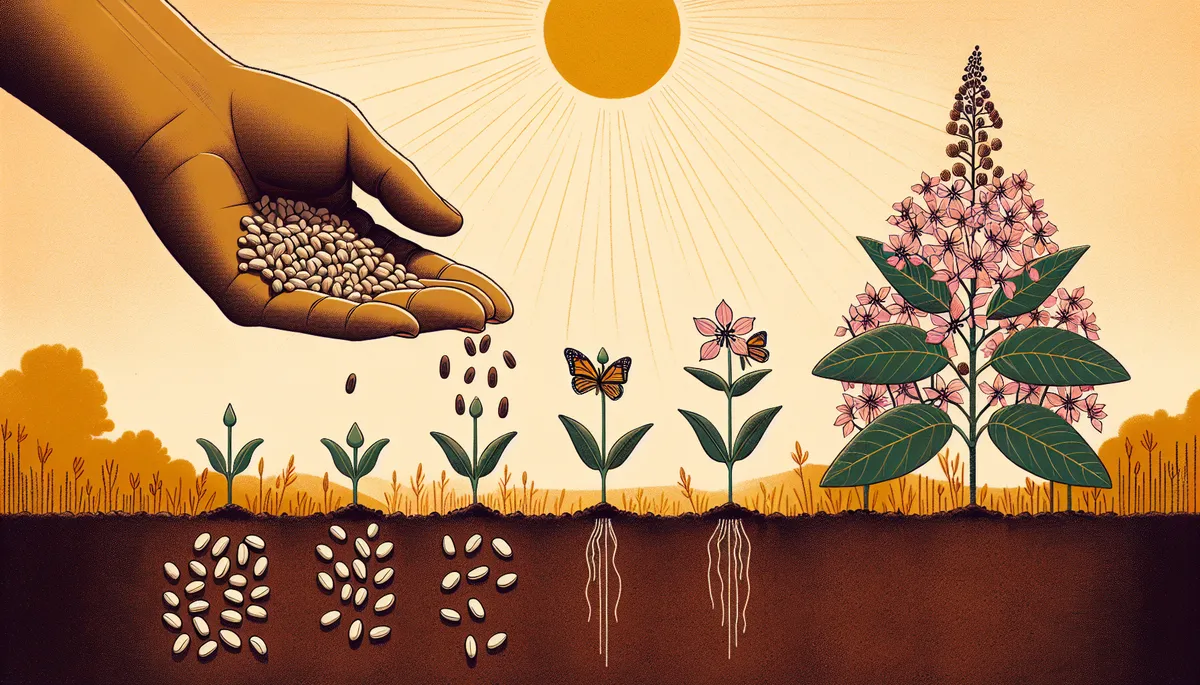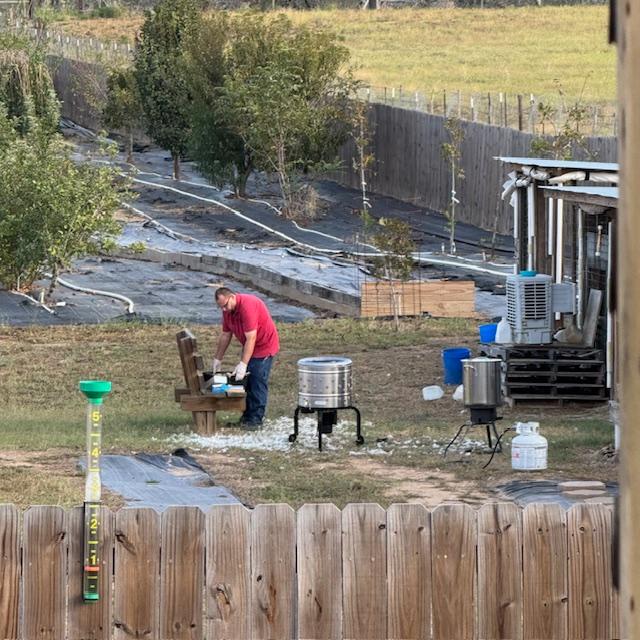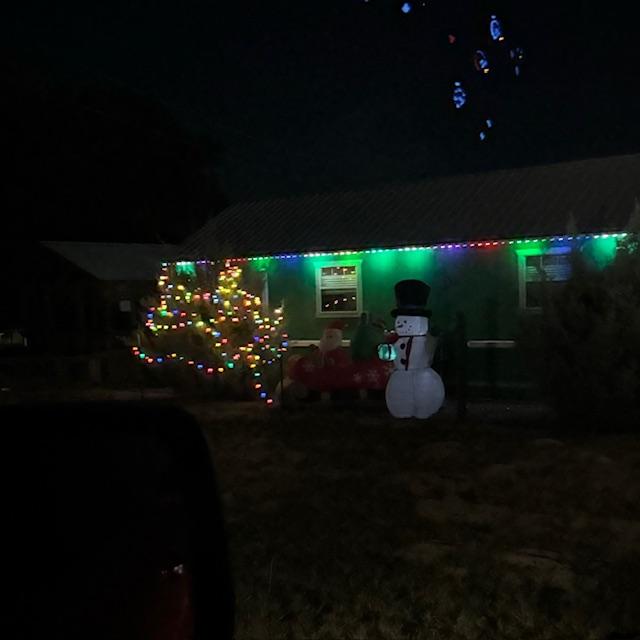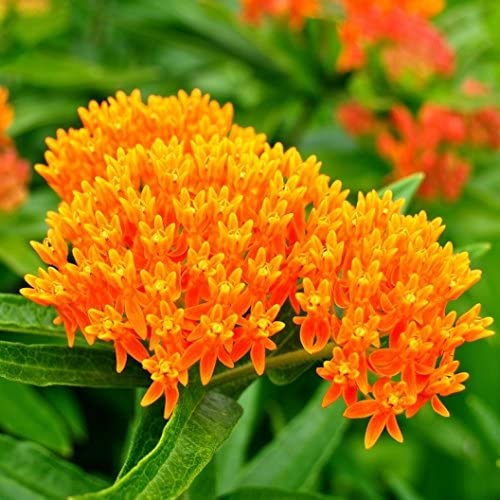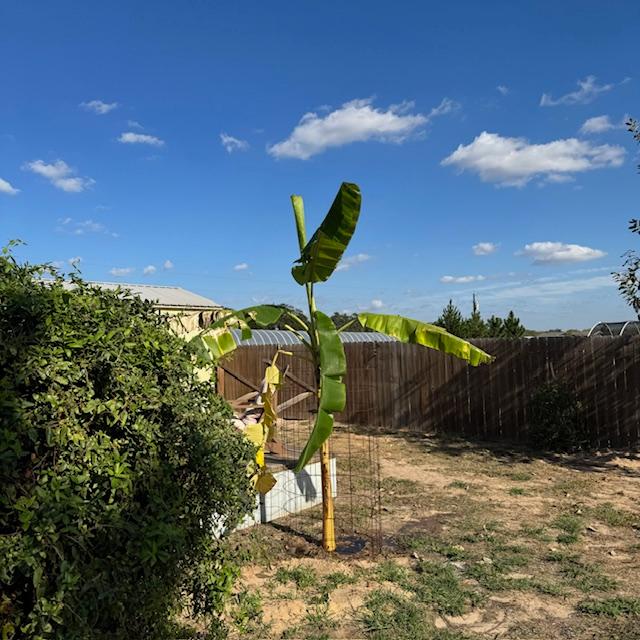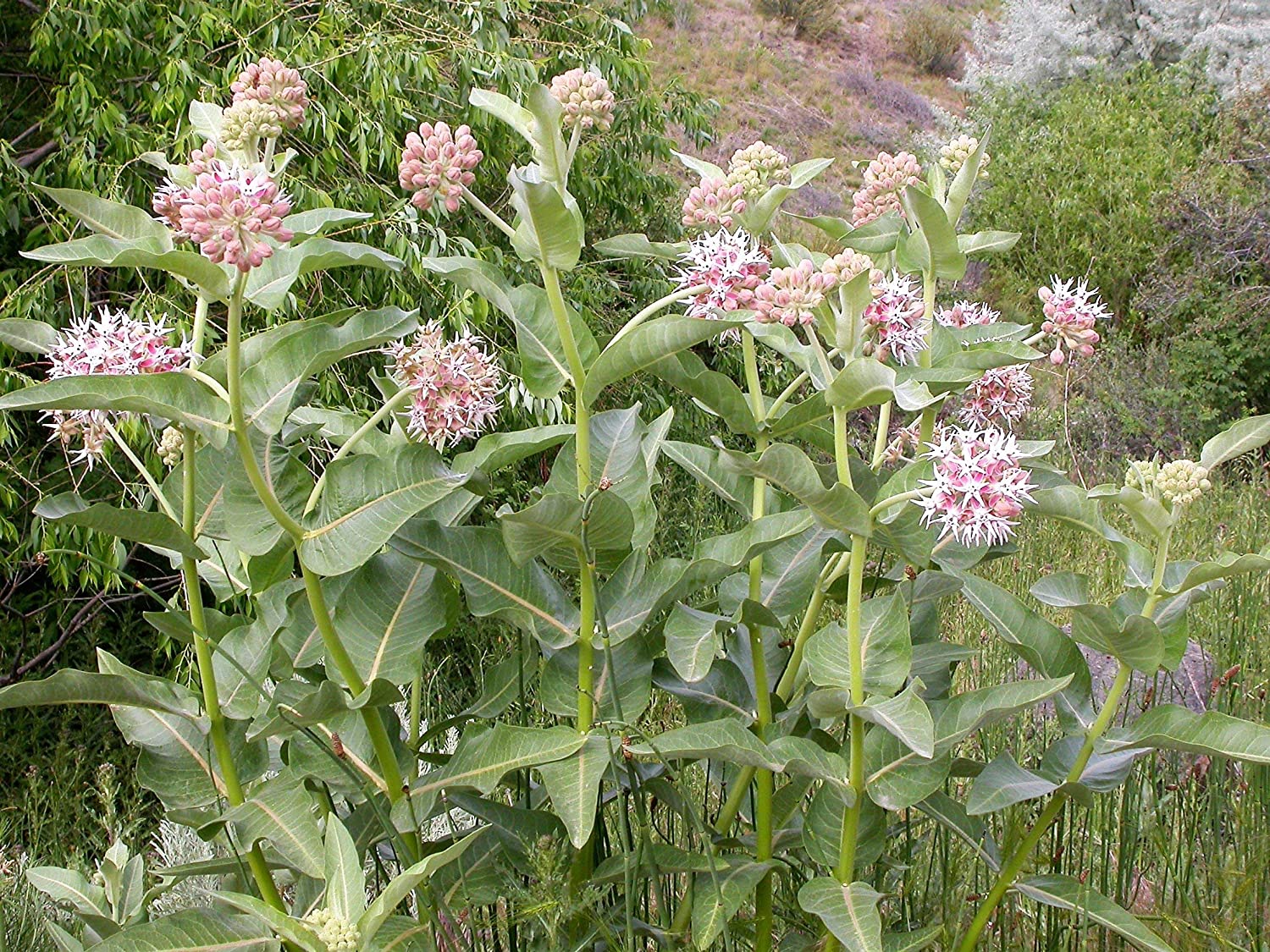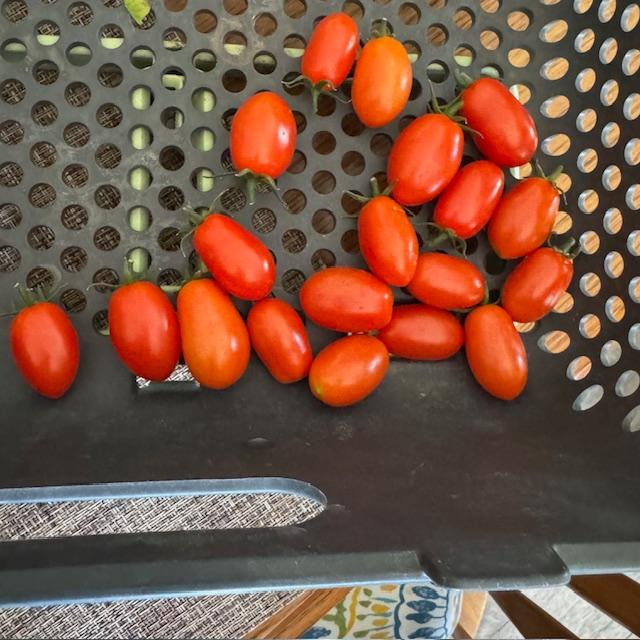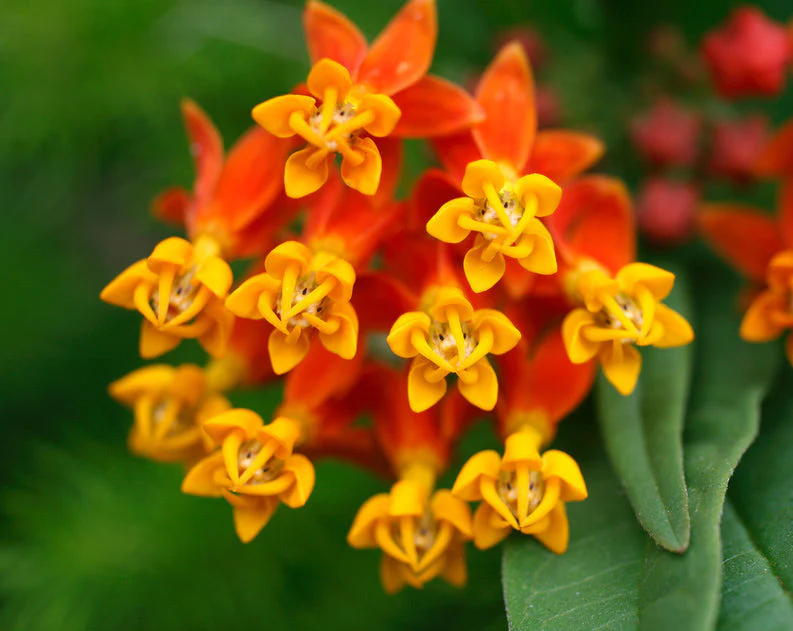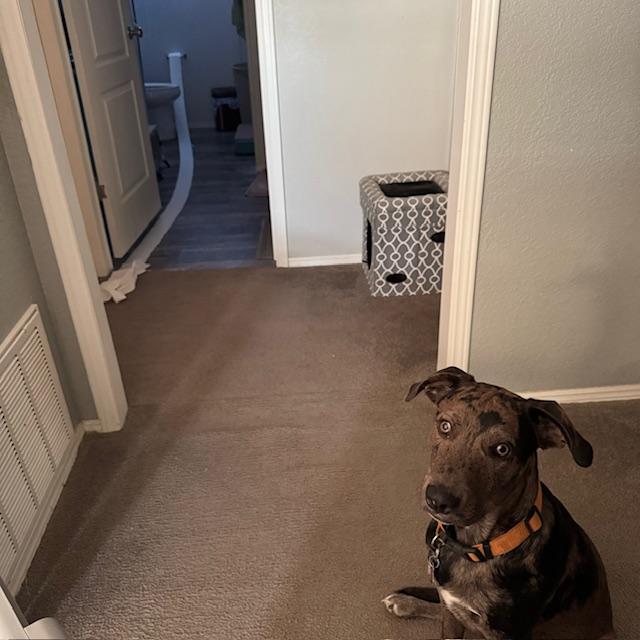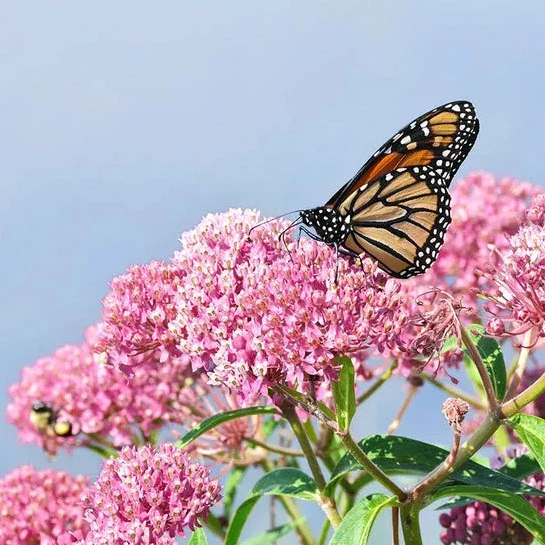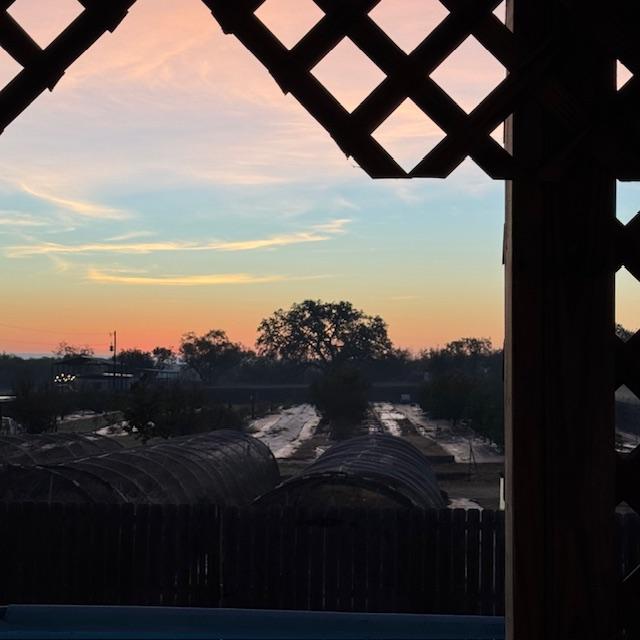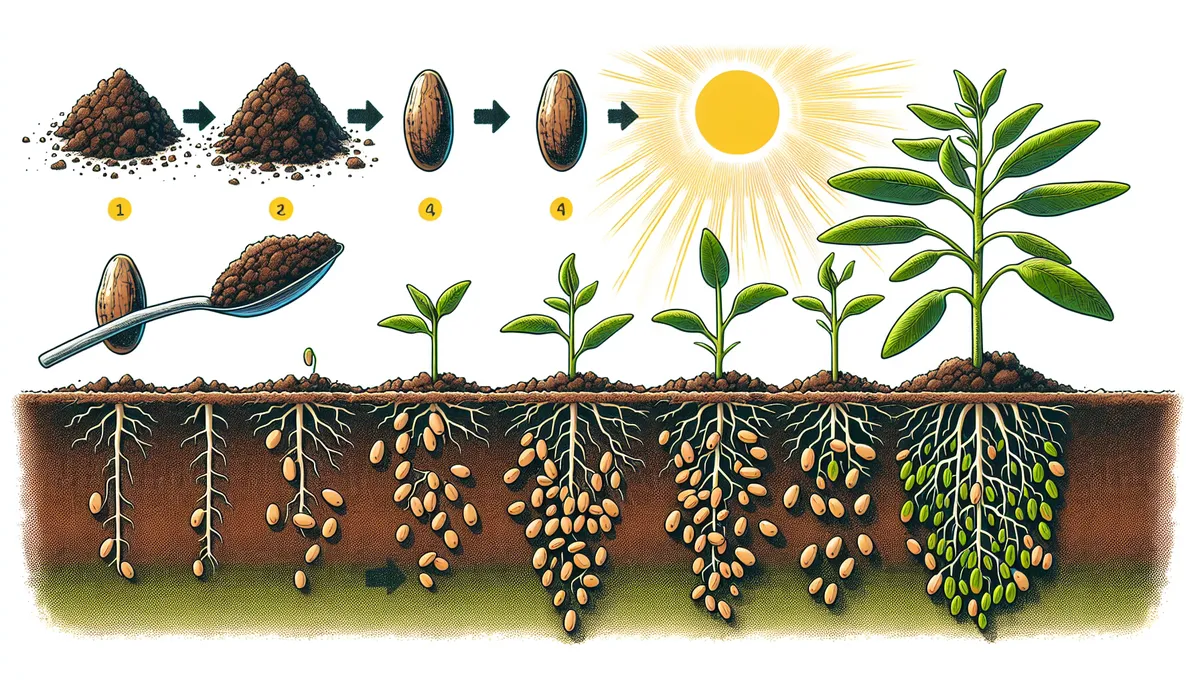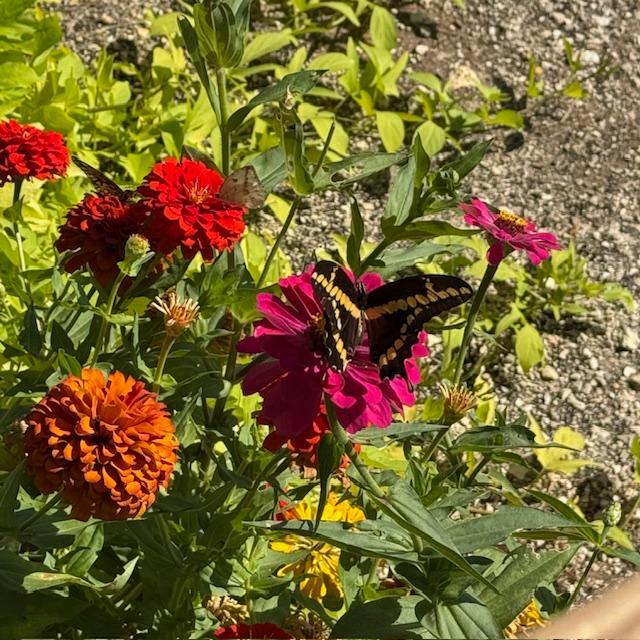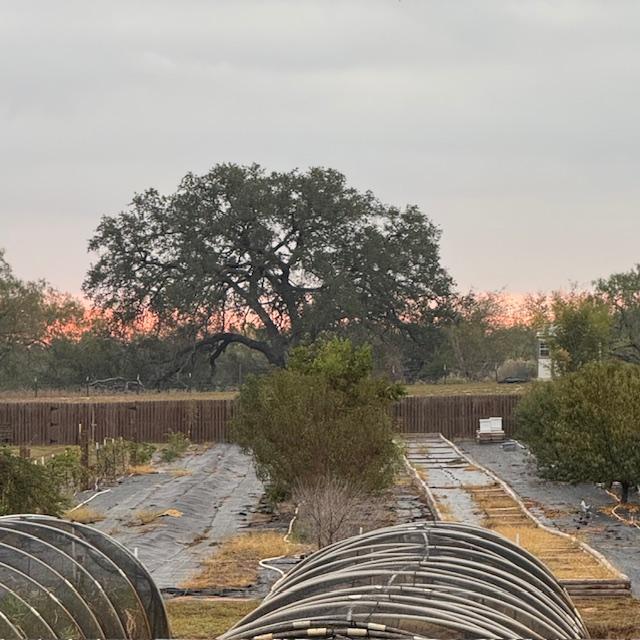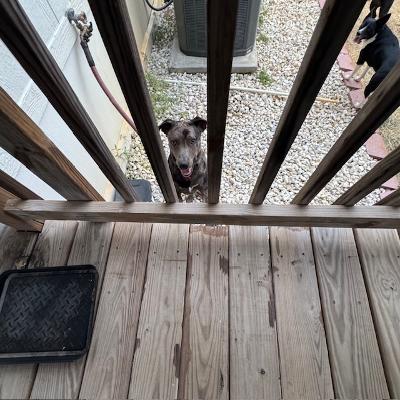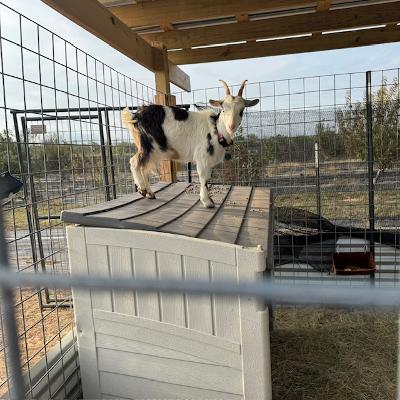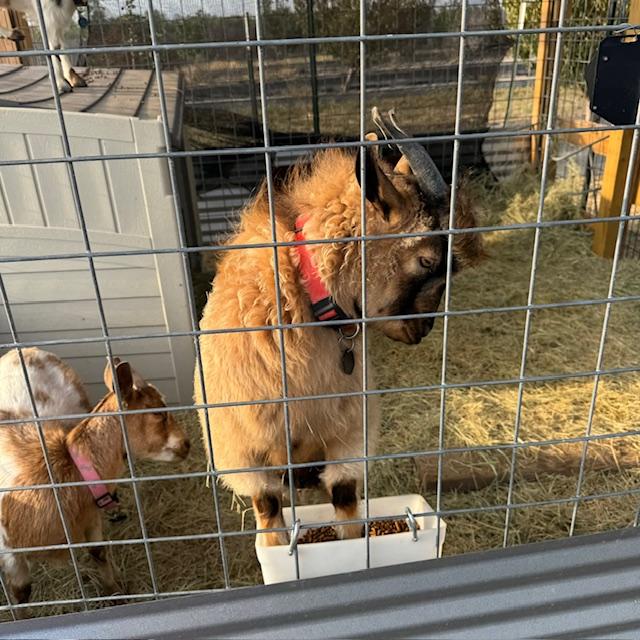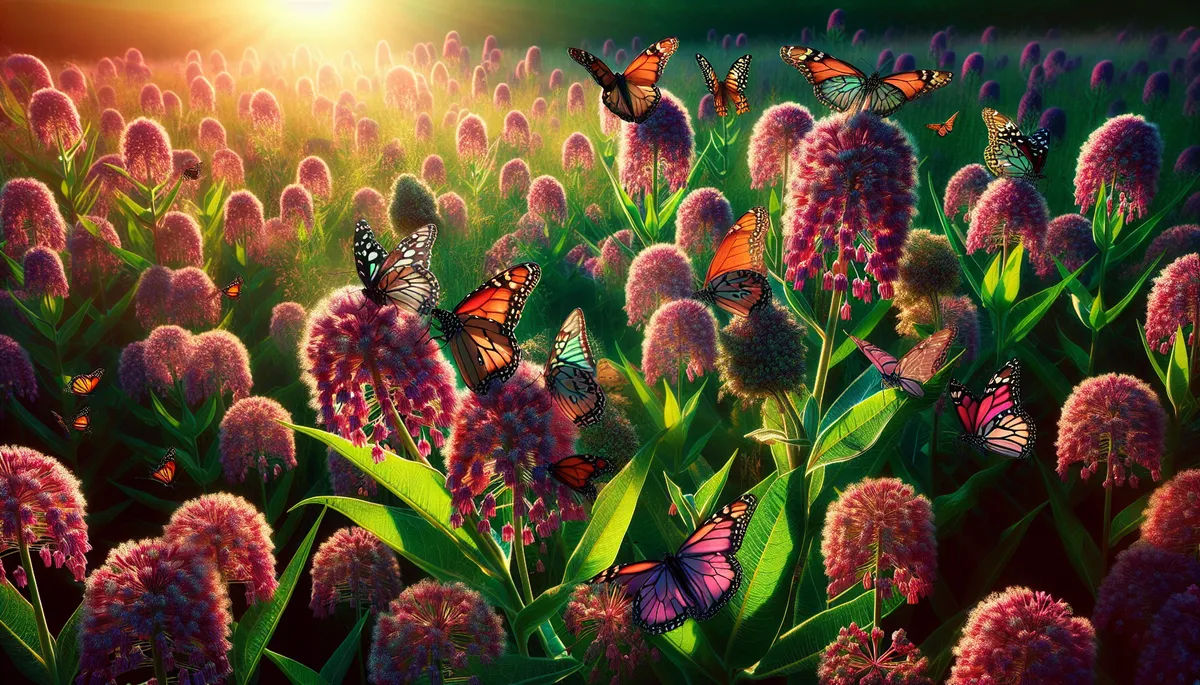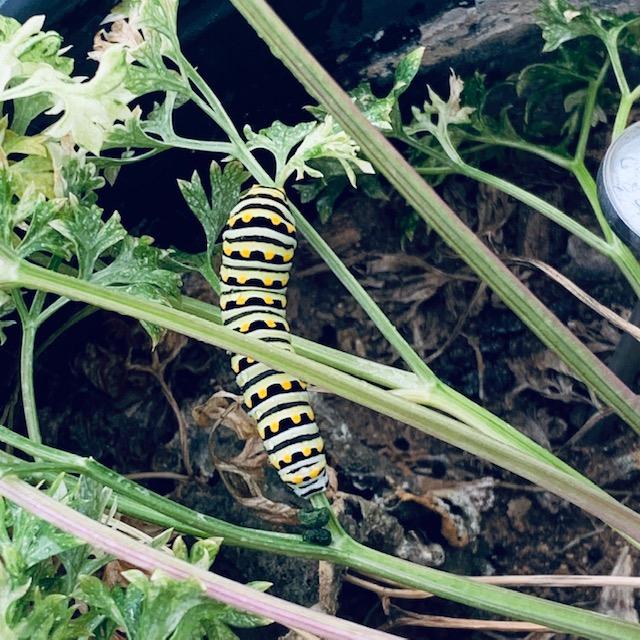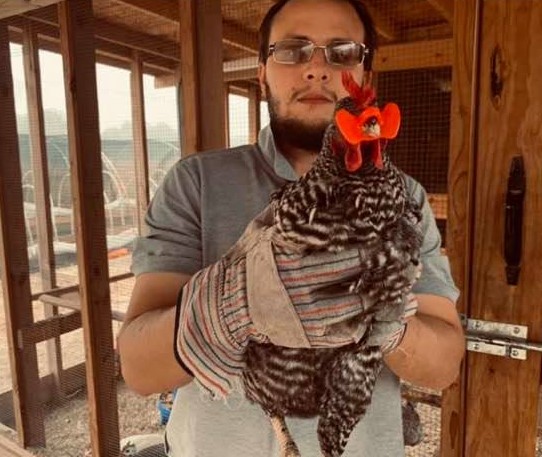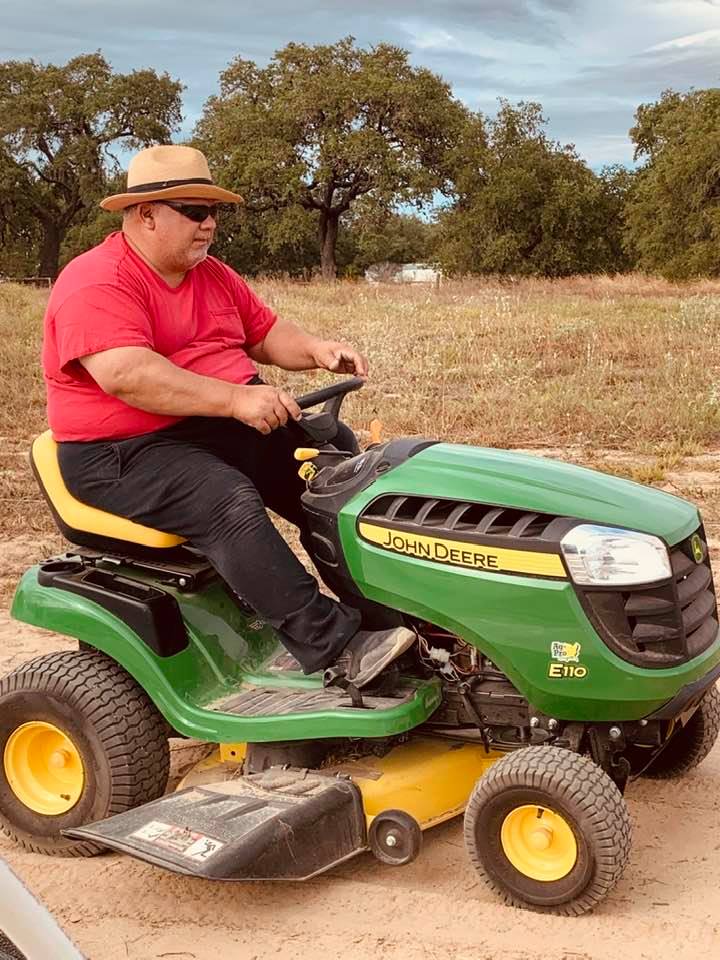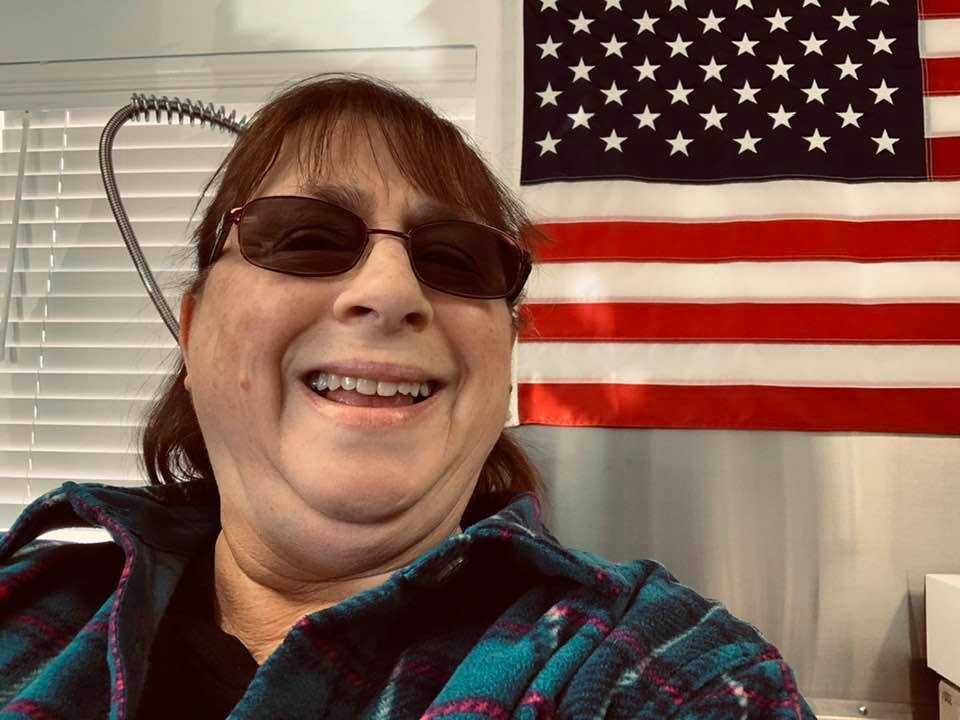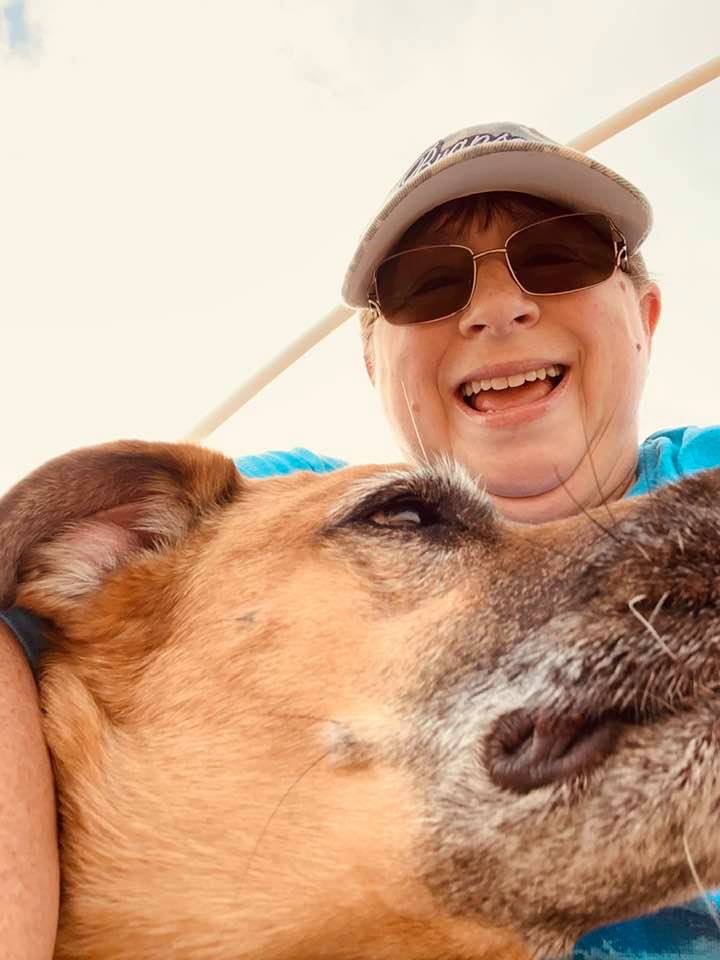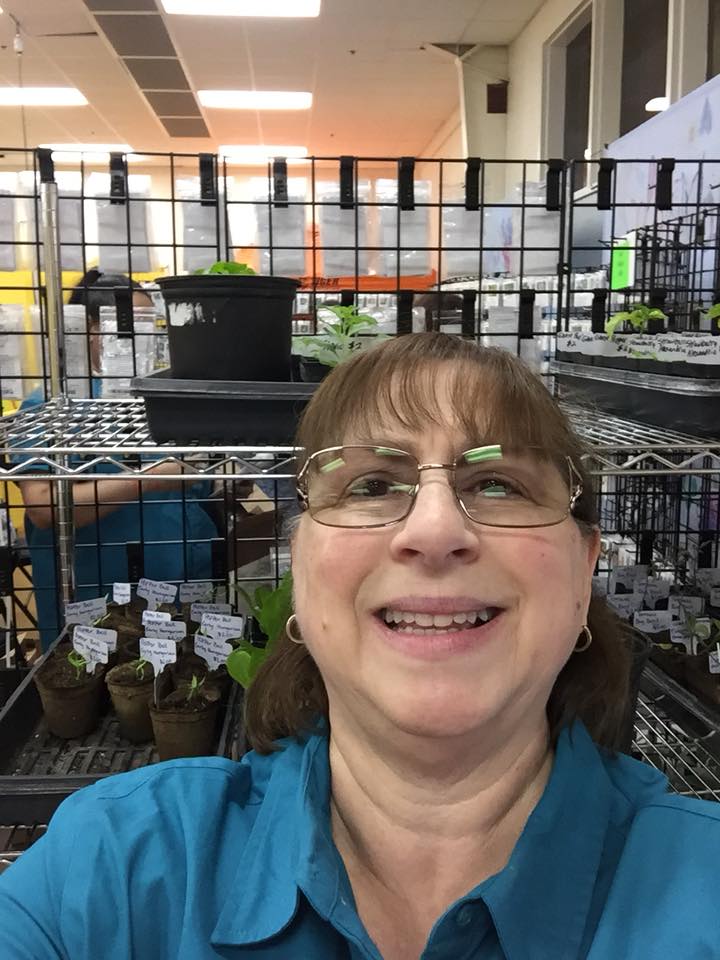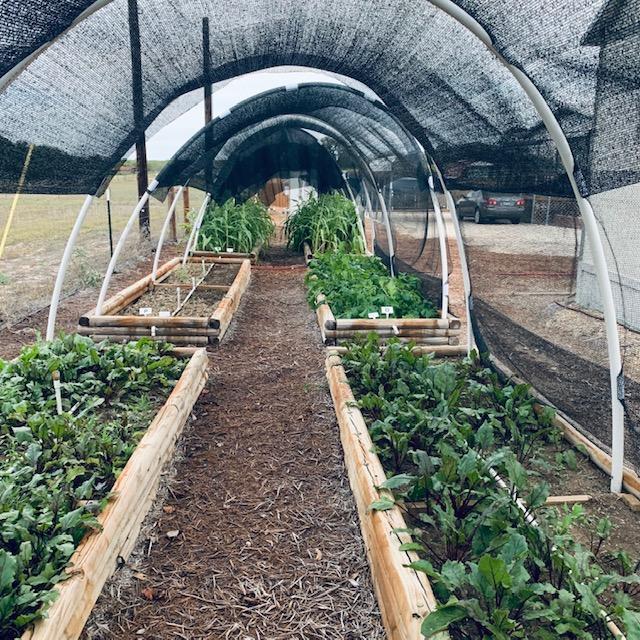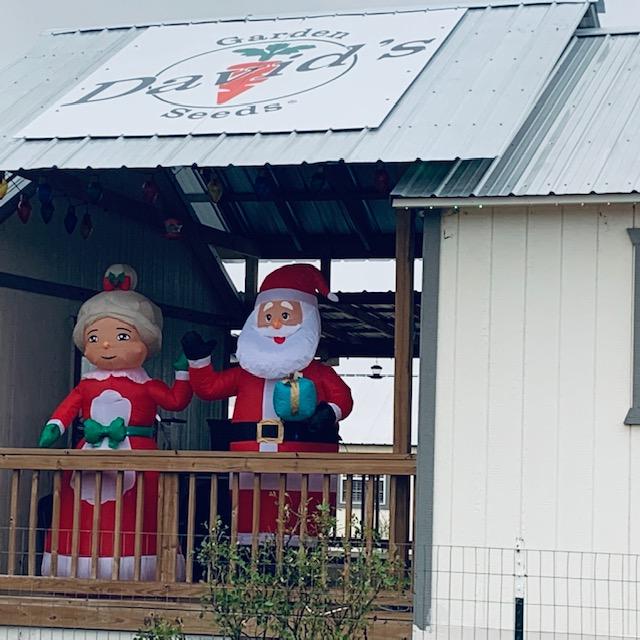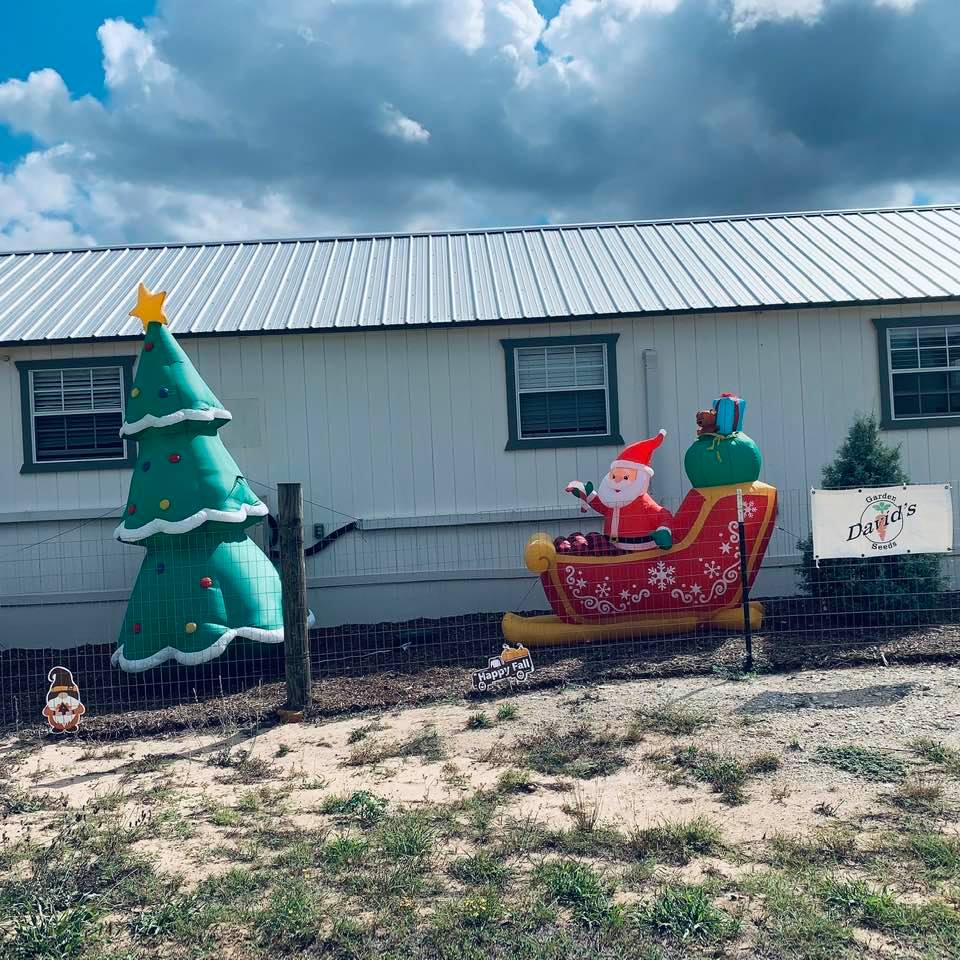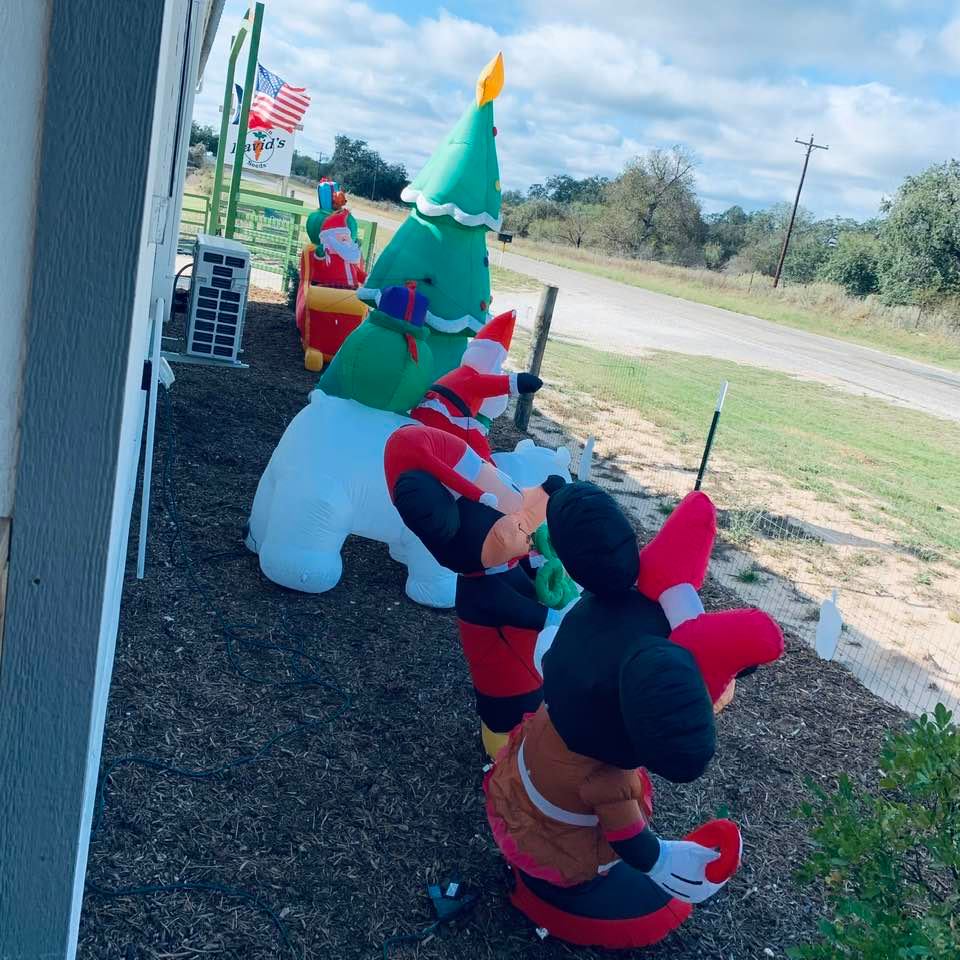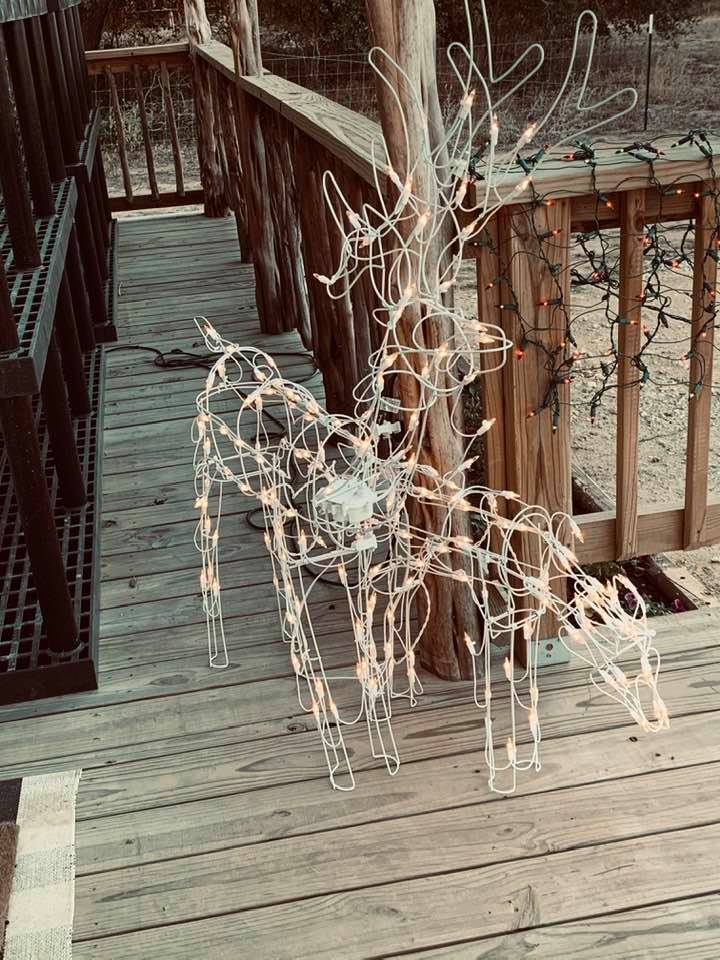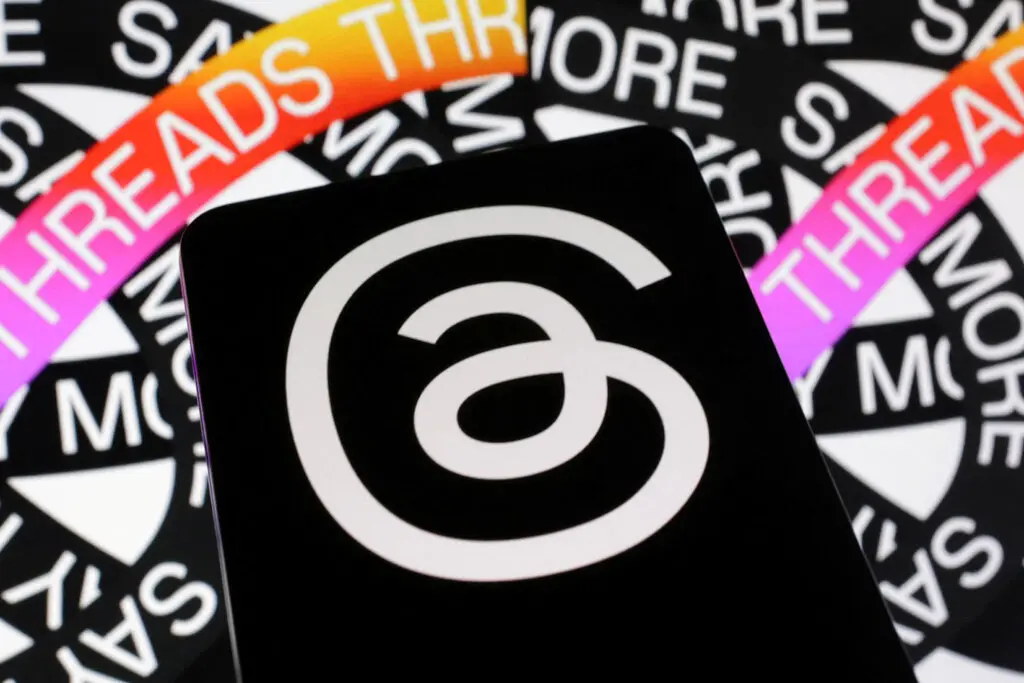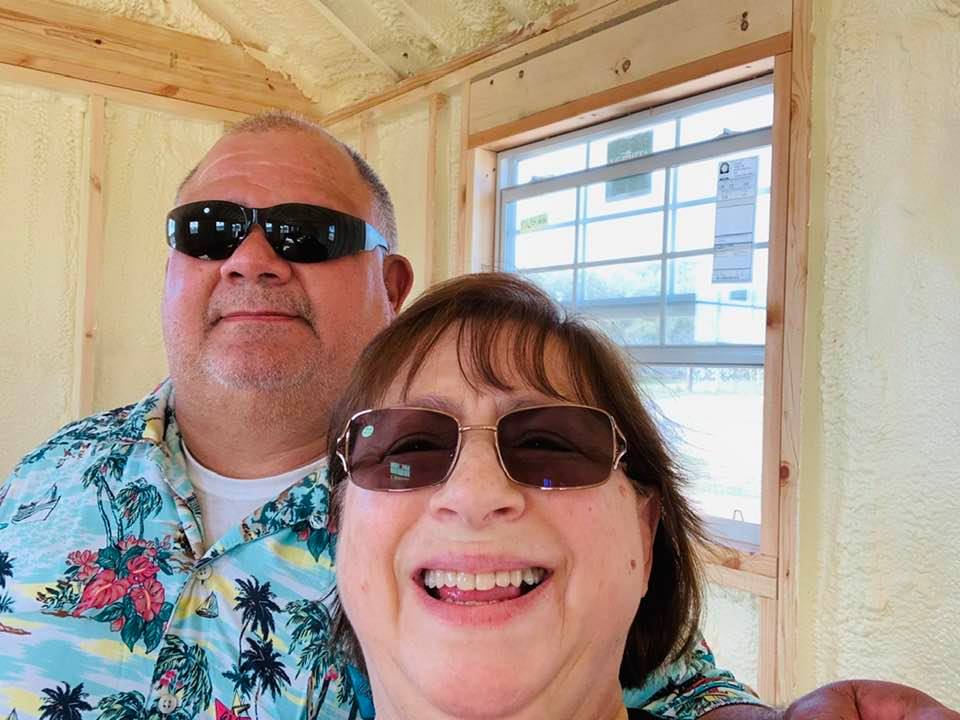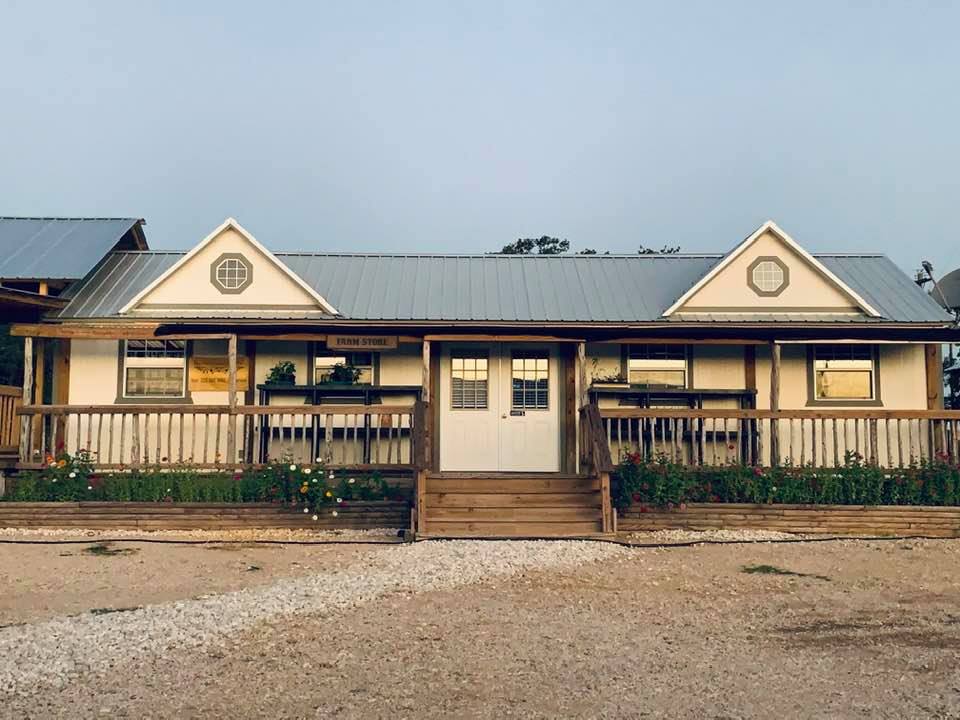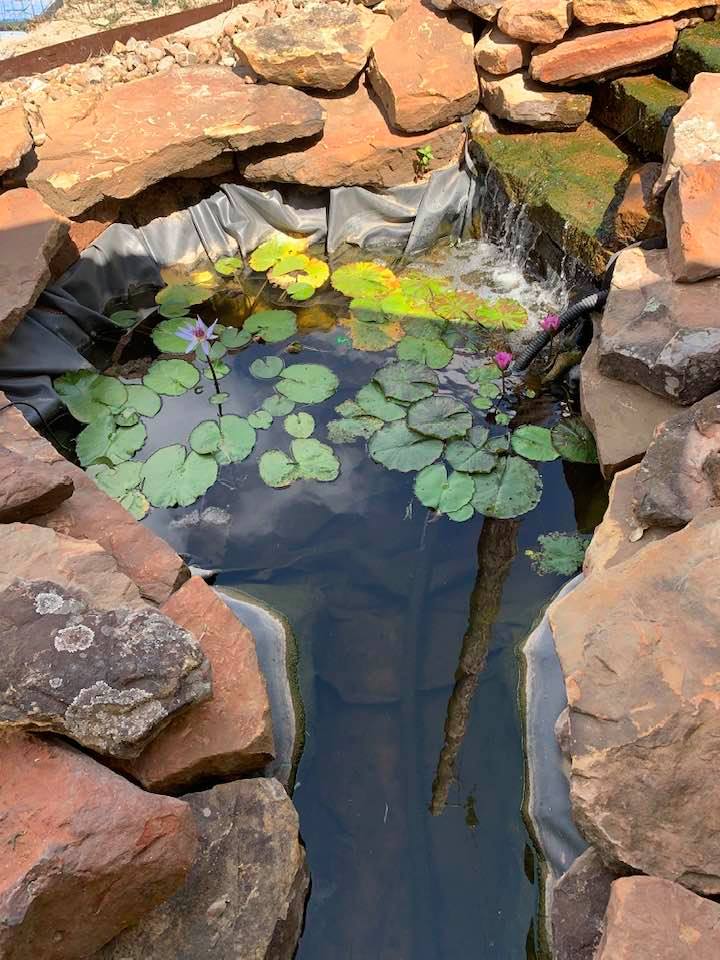Grow Milkweed From Seed
Hello, fellow gardeners! If you like lots of butterflies, you should grow milkweed from seed to attract plenty of them.
If you're as passionate about attracting butterflies to your garden as I am, you’ve come to the right place. This week, let's chat about planting milkweed from seed—a surefire way to turn your garden into a buzzing hub of pollination activity.
Butterflies are not just a pretty sight. They are essential pollinators, and milkweed is one of their favorite plants. When you plant milkweed, you’re rolling out the red carpet for these beautiful creatures. Trust me, your garden will become the go-to spot for local butterflies, helping pollinate all your fruits and veggies.
David's Garden Seeds® has the following milkweed seeds for you to plant:
- Antelope Horn Milkweed
- Asclepias Pleurisy Root
- Native American Butterfly Milkweed
- Native American Showy Milkweed
- Native Texas Rose Swamp Milkweed
- Tropical Milkweed
The best time in Texas to grow milkweed from seeds is in the fall. Milkweed seeds have to cold stratify before they will bloom. Plant them in October or November in warmer climates and they will bloom in spring. If you live in a cold climate, you will need to plant them in early spring. Check with your local county extension agent for the safest time to plant milkweed if you live up north.
Grow Milkweed From Seed - 11/11-11/17/2024
Monday, November 11, 2024
Happy Veterans Day!
Happy Veterans Day to all of the veterans out there! Thank you for your service! We appreciate you and when you let us know you are a veteran, you get a 15% discount from us. David is an Army veteran. Both of our fathers were veterans. Since it is Veterans Day, there will be no mail delivery and no mail pickup. That means your seed orders will be received a day later than anticipated. They are on their way.
I finished transplanting the last of the purple sweet potato vines that I rooted. Hopefully, they will grow nicely over the winter so we can sell them in the spring. I also rooted and planted some of the red and green coleus that we had. I will get more of that to root because it is so pretty.
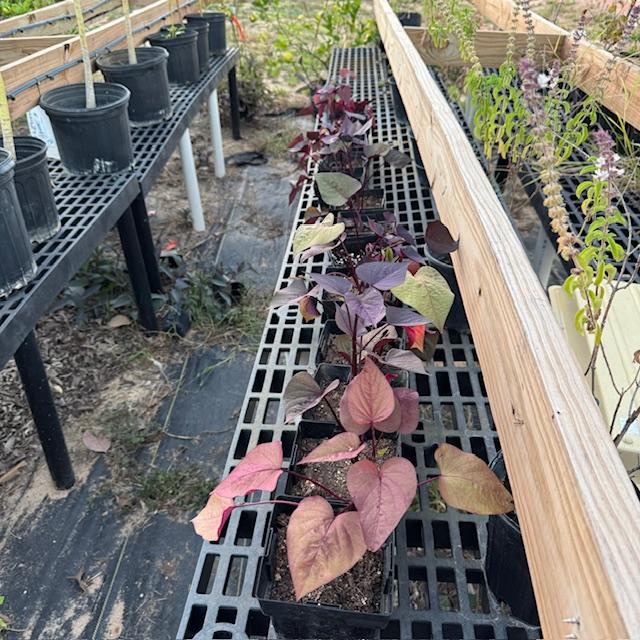 Here are some of the red and purple sweet potato vine plants that I rooted and transplanted. They should be for sale in the spring.
Here are some of the red and purple sweet potato vine plants that I rooted and transplanted. They should be for sale in the spring.This morning, Nacho is here with a helper, decorating the farm for Christmas. Here are a few items in process.
It's beginning to look a lot like Christmas and I have been singing Joy To The World all morning! I think it will look magical tonight!
We went out at sunset and things looked really great but when it got dark, we did not go back out. We should have. Maybe tomorrow night.
Fort Bend Regional Vegetable Conference
We will be at the 40th annual Fort Bend Regional Vegetable Conference on Thursday, February 6, 2025. If you would like to meet us, David and I will be there in person handing out information about our business. We are not allowed to sell anything there but we would love it if you would stop by our table, meet us in person, and even grab a selfie! I am always up for a selfie! If you are interested in getting tickets, here is the link. Get them now because the tickets are discounted until January and they are going quickly! We haven't been before.
Last year, we went to the Tomato Conference, but Jay with Texas Gardener Magazine says they are not having it this year. We were looking forward to going to that one.
If you are in the market for some fall flowers and you are in the area, we have two colors of calendula available in six packs for $9.99. We also have red bluebonnet plants in six packs for $19.99. The violas, pansies, and two types of snapdragons are available in singles for $3.95. They all need to be planted in the ground right now.
Grow Milkweed From Seed
So, you’ve decided to grow milkweed from seed. Great choice! Growing from seed is cost-effective and rewarding. First, let's dive into the types of milkweed, and then we'll get our hands dirty with the planting process.
There are several varieties of milkweed to choose from. Common milkweed, butterfly weed, and swamp milkweed are popular options. Each variety attracts different types of butterflies, including the beloved monarch. Hence, variety can make your garden a butterfly's paradise.
Now, where should you plant milkweed? These plants thrive in sunny spots. They love basking in the sun, so pick a location that gets six to eight hours of direct sunlight daily. Remember, happy milkweed means happy butterflies!
Timing is everything when it comes to planting milkweed seeds. The best time to plant is in late fall. This allows the seeds to undergo cold stratification, mimicking their natural wintering-over in the wild. This process enhances germination come spring.
If you're eager to start planting earlier, don't fret. You can simulate cold stratification by refrigerating the seeds for a few weeks. Place them in a damp paper towel inside a plastic bag—budget-friendly and efficient!
Tuesday, November 12, 2024
Good morning. I opened the door to take Ethel out and it is foggy all over, not just in bands like we usually get. It looks pretty cool. I am glad I do not have to drive in it to get to work. I hope our people get here safely today.
Our new small spring seed set will actually be put together today. I had to revamp it last night as we had duplicate seeds in both it and the new small fall seed set which is already made. Everything is different now except for the two bush beans because the Blue Lake 274 and the Contender are the best green bush beans for both seasons.
I have been working on orders and on the websites all day long. The fog burned off fairly quickly this morning. I did some planting before the orders.
Matt sent three more chickens on to freezer camp today. I am not sure of the exact count because I have not seen him since early this morning.
David asked me to put some HTML code up on the website. Hahahaha! I could not find any place to put up any HTML code. I looked it up online but it was above my pay grade. David will have to pay someone for help. SBI has a place to put HTML code so it is easy but I don't know how people with Shopify websites (like we now have) do anything with their sites. I know it is user friendly for customers but there is nothing friendly about it for the people building the sites.
He finally had to pay someone to fix it up and add it in for us. Of course, as usual, they will not show or tell us what they did so we can't do it...
It is now 3:45pm and Matt is still working on sending chickens to freezer camp. He did seven of them today. It is a lot of work. David just told me we can't do it anymore because he cannot afford to have Matt not doing what David needs to be done. We will see.
After work, I made ramen noodles because we had to leave to attend a meeting. After the meeting, we got gas and picked up dinner. We didn't get home from the meeting until 10pm. It was a long one...
Grow Milkweed From Seed
Now, let’s plant those seeds! The first step to grow milkweed from seed is to prepare the soil by breaking it up and removing any weeds or debris. Milkweed isn't picky about soil types, but it does prefer well-drained spots. Add some compost if your soil needs a nutrient boost.
Sow the seeds directly onto the soil surface. Milkweed seeds need sunlight to germinate, so press them lightly into the soil but don’t cover them entirely. A light pat will ensure good soil-seed contact.
Once your seeds are sowed, water them gently. You don’t want to wash the seeds away, so use a gentle spray or a watering can with a sprinkler head. Keep the soil moist until you notice seedlings sprouting.
While waiting for your milkweed to grow, let's chat about why attracting butterflies is crucial. We love butterflies, but beyond their beauty, they are vital pollinators. Milkweed provides food and habitat, encouraging them to visit your garden regularly.
As the seeds germinate, you’ll begin to see seedlings. Exciting, right? Keep the area weed-free and continue watering as necessary. This is the start of creating a welcoming environment for butterflies.
As your milkweed grows, it will become a hotspot for caterpillars and butterflies alike. Watching them flit about in your garden is a rewarding experience, and knowing you're helping support their population is even better.
You might wonder, what else is milkweed good for? Beyond attracting butterflies and aiding pollination, it helps with erosion control and provides habitat for other beneficial insects. It's an all-around great addition to any garden.
Now that you have some healthy milkweed growing, let’s talk about harvesting seeds for next season. Collecting seeds allows you to plant milkweed year after year without extra cost.
Wednesday, November 13, 2024
This morning started early. The air was cool and felt amazing. I was about to make breakfast when David announced that Nacho was on his way to put all of the trees into the greenhouses. After that, David and I left for the doctor's office in Pleasanton. Once that was done, we went to two different print shops for something that neither one could do. Then we hit Walmart for some groceries.
David also stopped at the meat market to get some nice steaks for this weekend for my birthday which he completely forgot about until I casually mentioned it in the Walmart parking lot. I guess I won't be getting anything special for my birthday unless I buy it myself...
We got home and carried everything in. David went to work and I got to put everything away and load the dishwasher. Since then, I have been working on orders.
A little while ago, a delivery driver parked outside the gate, walked in and up the stairs to the commercial kitchen. I went over and asked how I could help him. He wanted to use our land line because he had no service. He needed a gate code to make a delivery on another road. I explained to him that we do not have a land line.
This used to be a peanut farm so no one ever lived here. Therefore, AT&T said no when we asked about getting a land line because the telephone lines were not already here. We have cell phones with one bar. While we were talking, he got an answer from the customers giving him the gate code. He asked how to get back to San Antonio. I told him and he went on his merry way.
Matt finished off the meat birds this morning so that is done. After that, he had to get some propane and look for a tire that fits our wheelbarrow. This has been an ongoing problem for weeks.
Last week, when our bamboo trees came, Nacho planted them up at the top of the property, near the white shed. He was supposed to spread them out a bit but he left them all in a clump. Anyway, I had not been up there since they were planted so I suggested to David that we drive up there. We did and I got up to snap a few photos just as the sun was setting.
 I love this bamboo sunset shot but I wish he had spread the trees out like David told him to. The trees were not cheap and we wanted them to cover a bigger area.
I love this bamboo sunset shot but I wish he had spread the trees out like David told him to. The trees were not cheap and we wanted them to cover a bigger area.After this, I air fried some chicken, mushrooms, and sliced potatoes for dinner. It was incredibly delicious!
Grow Milkweed From Seed
Milkweed seeds are ready to harvest once the seed pods turn brown and start to split open. Watch out for this in late summer to early fall. It's a sign that the seeds are mature and ready to be gathered.
To harvest, gently open the pods, allowing the seeds to slip out. Milkweed seeds are attached to silky white floss. Separate the seeds by pulling them away from the floss.
Store the seeds in a cool, dry place until you're ready to plant them again. A simple envelope or jar works well; just make sure it's airtight to keep the seeds viable.
Taking care of your milkweed once it's planted is relatively straightforward. These plants are quite hardy and don't require a lot of pampering—great news for busy gardeners!
Water your milkweed during dry spells, but don't overdo it. These plants handle drought better than over watering. Too much water can lead to root rot, and we definitely don’t want that.
Milkweed isn’t typically prone to pests or diseases. However, you might see aphids from time to time. These can usually be managed with a spray of water or insecticidal soap.
In terms of fertilizing, milkweed doesn't need much. Compost in the spring is usually sufficient. Avoid over-fertilizing, as it can deter butterflies from laying eggs.
Thursday, November 14, 2024
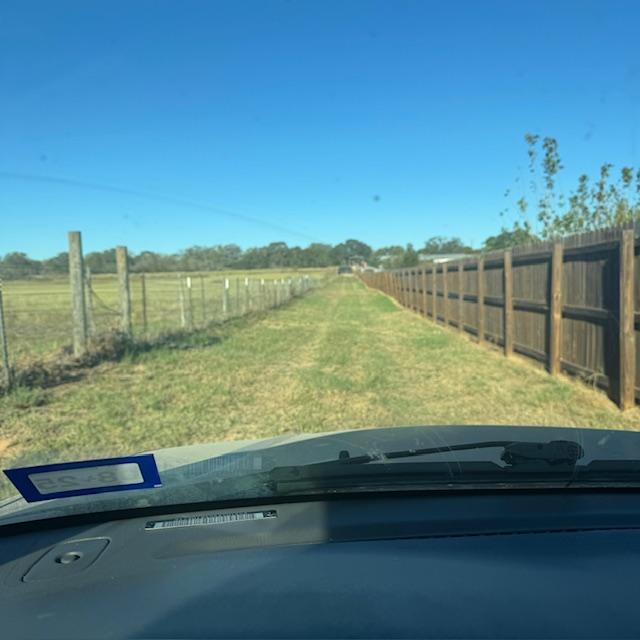 I drove around this morning in my car. This is about the middle of our property so I took this photo so you could see. To the right is the orchard. To the left, our vacant property.
I drove around this morning in my car. This is about the middle of our property so I took this photo so you could see. To the right is the orchard. To the left, our vacant property.Matt also picked some pomegranates and brought some lemons in from our trees. I will be juicing them along with some banana and apple this afternoon.`
So far today, we've had one visitor. Guess who it was...That's right! It was the Atascosa County Tax Man! He came to take some photos. He was actually very nice and took the time to explain a few things to us so that we can possibly get a tax exemption. We have to fill out some paperwork, get some things notarized, and then apply.
Big Birthday Sale 11/15-11/17/24
 Yours Truly has a birthday this weekend so David decided to let all of you help me celebrate. The pecan coffees will make a wonderful holiday gift for the coffee lovers on your list.
Yours Truly has a birthday this weekend so David decided to let all of you help me celebrate. The pecan coffees will make a wonderful holiday gift for the coffee lovers on your list.This morning, I got an email from David telling me to set up a birthday sale since Sunday is my birthday. So I did. After setting it up, I sent out two newsletters and put it up on social media.
The sale starts tonight at midnight Central Standard Time and will go through Sunday night at midnight CST.
Here are the details:
All Seeds Including Seed Sets, Save 50%!
All Garden Trays & Rabbit Manure Fertilizer, Save 40%!
All Texas Rice With Zero Chemicals, Save 30%!
All Texas Pecan Coffee, Ground & Whole Bean, Save 20%!
No Minimum Purchase
No Discount Code Required
In-Store & Online
Here is the link for this sale that starts in 10 hours!
We are starting to get ready for the coming cooler weather. Both greenhouses are now covered in thick plastic and we have begun loading tropical trees and citrus as well as hot pepper plants and anything else the cold doesn't like into the greenhouses to protect them.
I did not get around to it today because I was doing orders, but I will have to take all of my plants in tomorrow. Next, I will need to dig up all of my sweet potatoes. Hopefully, there are sweet potatoes down there...
Don't forget that we have cold hardy flowers for sale right now. I will be planting some more of them tomorrow.
Grow Milkweed From Seed
As autumn rolls around, you’ll notice your milkweed entering dormancy. You can trim back the spent stems to keep your garden tidy, but leave some seed pods if you want to support local wildlife.
Let’s circle back to why we’re doing this. We need butterflies to act as pollinators. They ensure the healthy production of fruits and vegetables, as well as the continued survival of many plant species.
By growing milkweed, you’re contributing positively to the environment. You’re helping to sustain butterfly populations and, in turn, aiding biodiversity.
Let’s not forget the pure joy of seeing butterflies in your garden. They bring life and movement, creating a lively, colorful space that can be truly therapeutic.
Attract butterflies to your yard with milkweed, and you’ll be investing in the health of your garden. It’s a win-win situation for you and your local ecosystem.
Now, how about some personal anecdotes? I remember the first time I decided to grow milkweed from seed. I was amazed at how quickly the butterflies started to visit. Seeing monarch caterpillars munching away was incredibly rewarding.
One year, I had a small patch of milkweed but managed to host dozens of butterflies. It became a neighborhood attraction, drawing interest from neighbors who weren’t even into gardening.
Watching the life cycle from caterpillar to chrysalis to butterfly was like having a live-action nature documentary right in my yard. It sparked curiosity and appreciation in my friends and family.
So, there you have it, a bit of my own experience to motivate and inspire you. I hope you're excited to grow milkweed from seed and welcome more butterflies into your garden.
Friday, November 15, 2024
I believe that summer may finally be over. It was 43° here this morning and I had to put a hoodie on. However, it is supposed to get up to 78° today so I don't know.
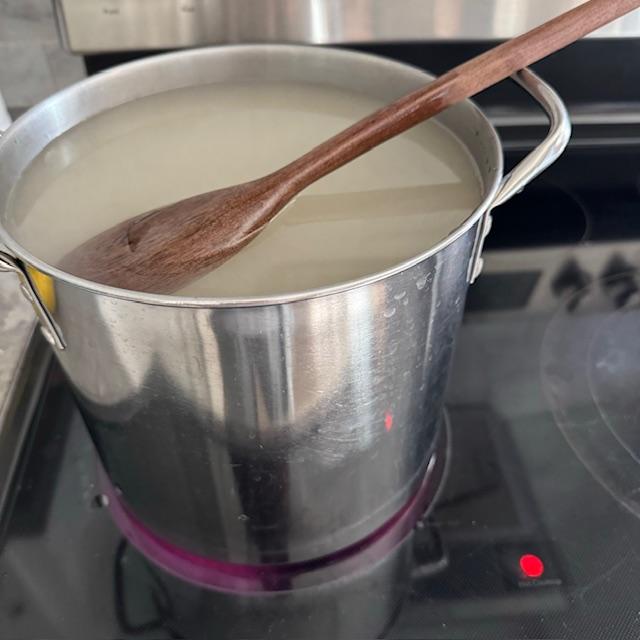 In the winter when there are less flowers, it is time to supplement the feed for the bees using sugar and water.
In the winter when there are less flowers, it is time to supplement the feed for the bees using sugar and water.I made some sugar water to feed the bees this morning. A ten pound bag of sugar didn't make much.
Trump decided to redecorate one of the bathrooms this morning. How do you like his work?
We had three sets of customers today and David had to come out and give a tour to a family because Matt was out running errands for David. I pulled a lot of orders and got them mailed out.
At the end of the day, Matt and I got all of my plants indoors, on trays and then I watered everything. We will need to put a new floor in next spring as well as a roof. The carpenter who built it used wafer board for the floor. It is ruined and some of it is ready to break through. I cannot believe that is what he used. I do not want to use him anymore. We used that guy quite a bit in San Antonio and several times out here. He built this so cheap. I am disgusted.
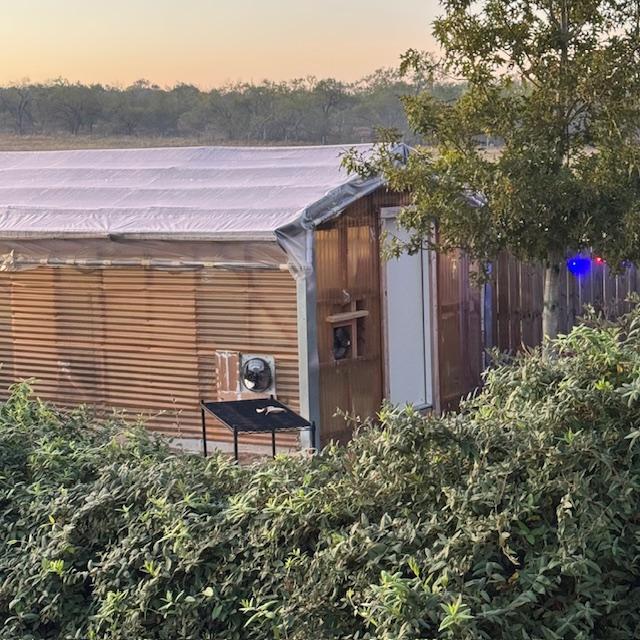
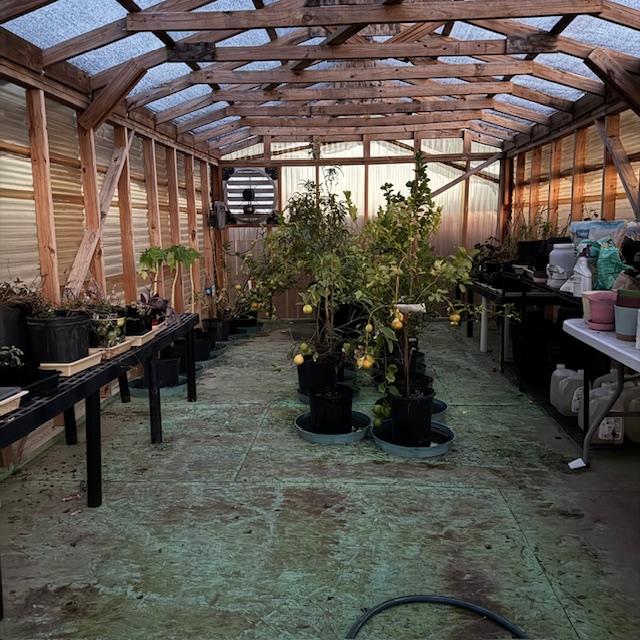 My plants are all put away in the greenhouse. I cannot believe the builder used wafer board for the floor.
My plants are all put away in the greenhouse. I cannot believe the builder used wafer board for the floor.When I finished in the greenhouse, the Beaver Moon had come up. Here it is along with my newly planted banana tree.
Grow Milkweed From Seed
I hope this guide empowers and excites you to start your milkweed-growing journey. It's time to roll up those sleeves and begin!
May your garden flourish and become an inviting haven for butterflies. Let's help these incredible pollinators thrive so they can continue their essential work.
So, what are you waiting for? Gather those seeds, head outside, and start your planting. The butterflies are eager to meet their new favorite spot.
Let’s make a pact, right here and now, to invest in the future of our pollinators. With milkweed in our gardens, we’re making a world of difference.
As we conclude, let’s take pride in knowing that our decisions as gardeners have a ripple effect. Every plant we choose can make a positive difference.
So, are you ready to dig in and let your green thumb flourish by growing milkweed from seed? The butterflies can’t wait, and neither should you.
Maybe you’ll find a sense of peace watching butterflies float from flower to flower. Nature’s tranquility is one of gardening’s greatest gifts.
Armed with knowledge and enthusiasm, you're now ready to plant, nurture, and enjoy your milkweed. Reap the benefits of colorful visitors and thriving plants.
With every milkweed planted, you're taking a step towards maintaining biodiversity and supporting local ecosystems. It’s a rewarding endeavor with tangible benefits.
Saturday, November 16, 2024
I got up this morning and it was 55°. It is currently 1pm and 82°. I got all of the animals taken care of and opened the store. I unpacked boxes of CowPots and snap clamps and got them all priced. Since then, I have been filling orders. There have been no customers. That is too bad because we are having such a good sale and we have beautiful flowers for this time of year.
Well, back to pulling more orders...
The Amazon delivery driver came in to the parking lot just in time for the gate to close. I went out, got the packages, and then opened the gate so she could get back out on the road.
Then I closed the store and finished pulling the orders. I am going to do some laundry and do some cleaning up.
David and Matt made ribeyes for dinner and we watched the final Bond film. It was sad.
Grow Milkweed From Seed
Remember, patience is key. Nature has its own timeline, and you'll see the fruits (or rather, the butterflies) of your labor in due time.
Should you have any setbacks, don't be discouraged. Gardening is as much about learning from experience as it is about success. Each step taken is progress.
Now that we're wrapping up our chat, let's do a quick recap. Why should you grow milkweed from seed? For the butterflies, the pollination benefits, and the pure joy it brings to your garden.
You now know how to prepare your seeds, plant them, and care for them, ensuring they thrive and support butterfly populations.
Get excited for those sunny days when you can watch your milkweed thrive and spot butterflies flitting about. It's such a satisfying sight!
Have your seeds ready for next season. The cycle continues, offering even more opportunities to attract butterflies and enjoy their presence in your garden.
Why not share your newfound knowledge with friends and family? Encourage them to plant milkweed too. Together, we can create butterfly-friendly communities.
And if you're part of a local gardening club, consider organizing a community effort to plant milkweed. The impact could reach far beyond just your backyard.
Pay close attention to your milkweed’s growth each season. Note changes and maybe start a garden journal. It's a fun way to track progress and document the amazing visitors you receive.
Garden journaling aside, embrace the unpredictability of gardening. It’s a living art, after all, with surprises and delights at every turn.
Speaking of surprises, you might find that planting milkweed brings more than just butterflies. Happy pollinators like bees will also pay a visit, boosting the overall health of your garden.
After all, milkweed is food for butterflies, making it crucial to sustaining their populations. Your effort supports a larger ecological balance.
Sunday, November 17, 2024
Good morning. Today is my 65th birthday. I don't feel old but I actually am. Wow! I could get all profound but I won't do it now...It is time for me to go out and feed all of the animals. It is 7am. The sky is overcast and it is 59°. It is also the last day of our birthday sale.
While I was out with Ethel early this morning, Trump, Sue Ellen, and Pamela were on the other side of the yard. Trump was climbing up to reach me. He is so cute!
David made a very nice breakfast of French toast, sausage, and eggs. Then I went out to take care of the animals. While I was with the goats, I finally figured out how Trixie jumps up on the roof of the shelter. She hops up on a feed dish attached to the wall and then leaps up from there. I wish I had caught the whole thing on camera!
By the way, both Alice and Trixie are pregnant. I hope the babies are both girls! Norton should be going to his own shelter this week. He has become very aggressive towards me and Alice and Trixie, knocking them both out of the way to get food and that is not right.
 My friend, Annalee, got me a light up Christmas snowman for today! She has a matching one so maybe we will show up together somewhere with them on! Look for photos!
My friend, Annalee, got me a light up Christmas snowman for today! She has a matching one so maybe we will show up together somewhere with them on! Look for photos!It is almost 4pm and we just got home. We went to church and after church, David took me to Triple C for lunch. Matt was there, too. Soon, quite a few friends from church showed up and David gave me a surprise party. I had no idea. It was so nice! Not one person said a word to me about it!
Grow Milkweed From Seed
As you watch your milkweed garden grow, reflect on your role in supporting nature. Every bloom and butterfly is a testament to your commitment.
I look forward to hearing about your milkweed adventures. The stories we grow as gardeners connect us all—humans, plants, and insects alike.
Remember to enjoy the process. Gardening, after all, is about finding joy in the journey. Celebrate every sprout, bloom, and butterfly visit.
Thank you for joining me on this milkweed journey. Here’s to creating vibrant, butterfly-friendly gardens that benefit us all. Happy planting!
Return from Grow Milkweed From Seed to Our Sixth Year
Anything To Share On This Topic?
Would you like to share additional information about this topic with all of us?
Since 2009, over 1,500,000 home gardeners, all across the USA, have relied on David's Garden Seeds® to grow beautiful gardens. Trust is at the heart of it. Our customers know David's Garden Seeds® stocks only the highest quality seeds available. Our mission is to become your lifetime supplier of quality seeds. It isn't just to serve you once; we want to earn your trust as your primary supplier.
Watch Our 2022 TV Commercial!
Sing Along To Our Jingle
♪♫♪♪ ♫ ♪ ♫♪♫♫
♪♫♪♪♫♫
Peppers and peas
And lots of yummy greens
You can't go wrong
With Squash This Long
At David's Garden Seeds
♪ ♫ ♪ ♫
Our New 2024 TV Ad
Please like and subscribe on YouTube and come visit us at our Farm Store! The music on our TV ad was written, played, and sung by our son, Matthew Schulze. You can meet him when you come to the farm. He just might give you a tour. Ask him to grab a guitar and sing our jingle that he wrote.

We are David's Garden Seeds®. If you need great seeds, we've got over 1,200 varieties to choose from.
Subscribe To Mrs. David's Garden Seeds® Newsletter For FREE!
Find out what is going on down on the farm by reading our blog and by subscribing to our free newsletter for all of the information going down at David's Garden Seeds® and on the farm. I love to share helpful information with you. Please let your friends know and y'all come on down for a visit when you get the chance. We would love to meet you!
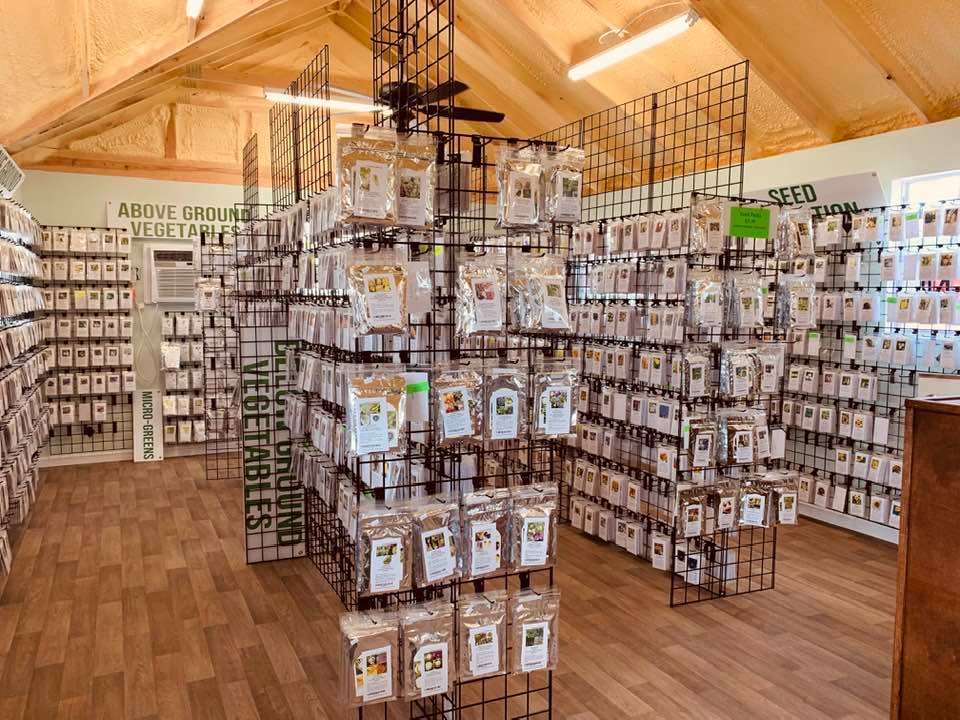
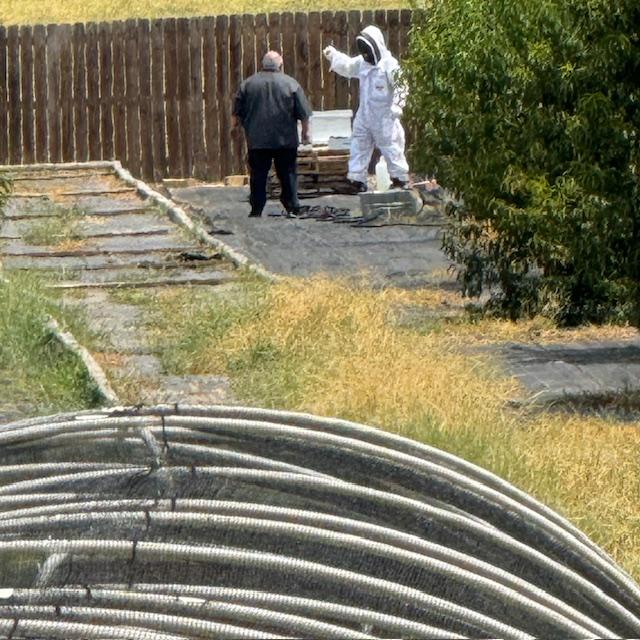 Our bee hives
Our bee hives Our fish pond
Our fish pond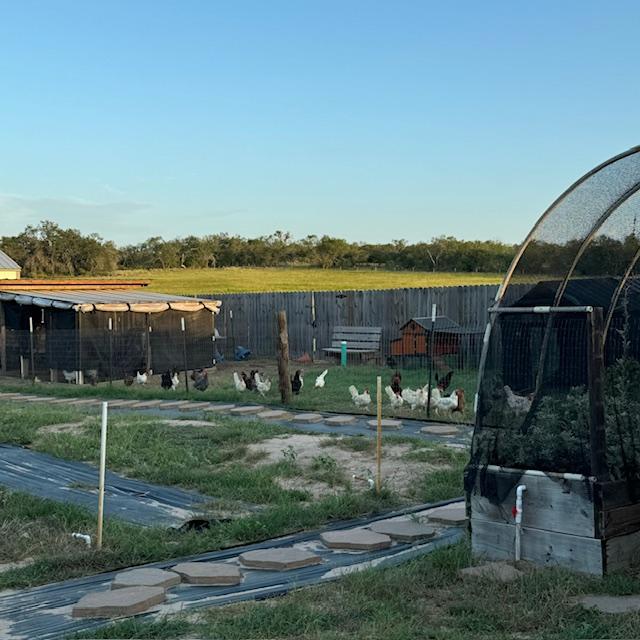 Our chickens
Our chickens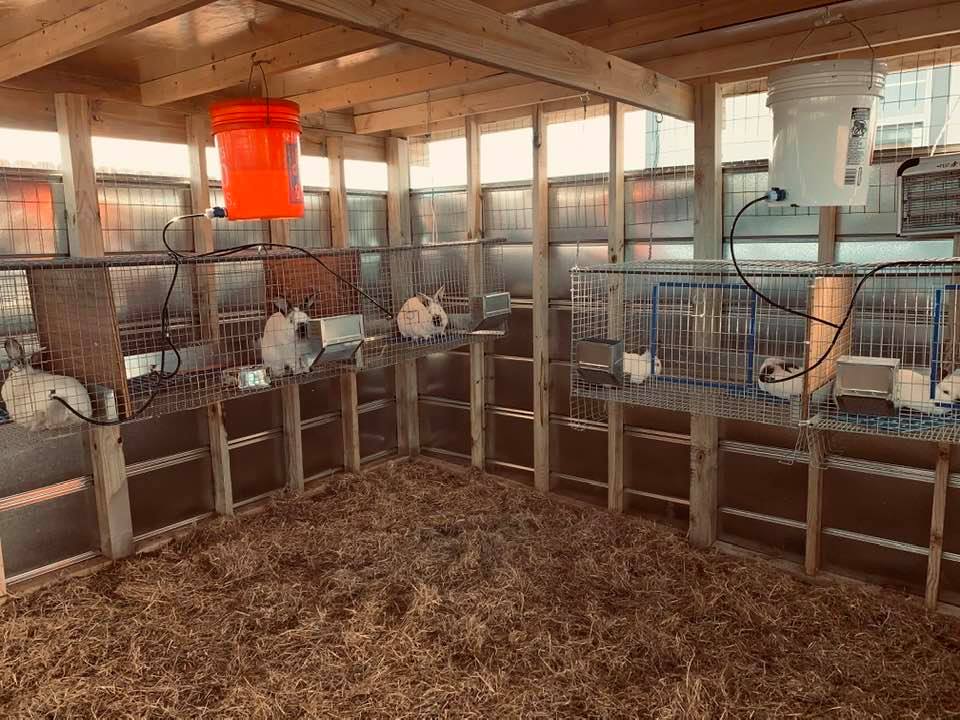 Our bunny rabbits
Our bunny rabbits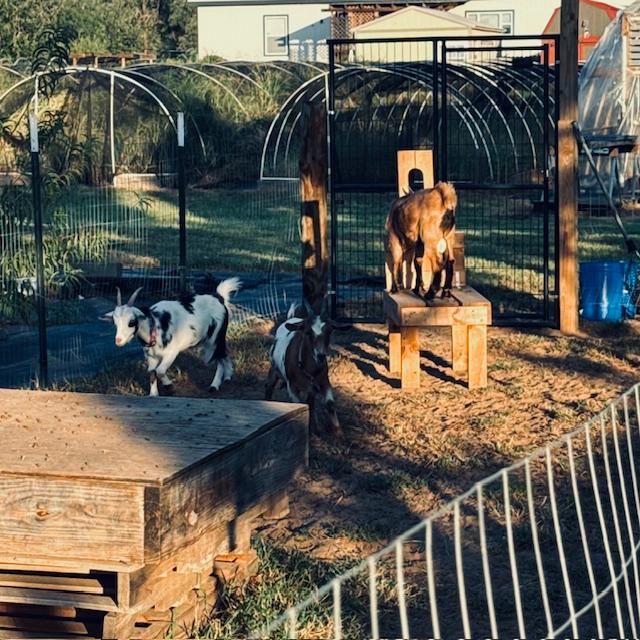 Our Nigerian Dwarf goats
Our Nigerian Dwarf goats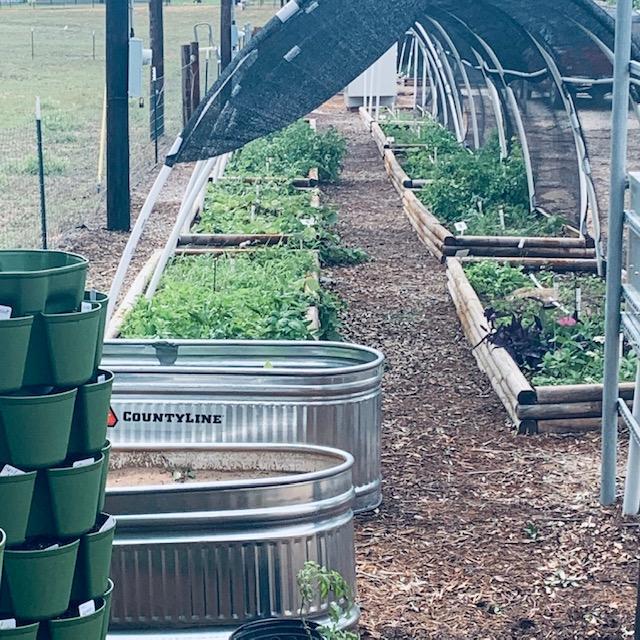 A few of our raised garden beds
A few of our raised garden beds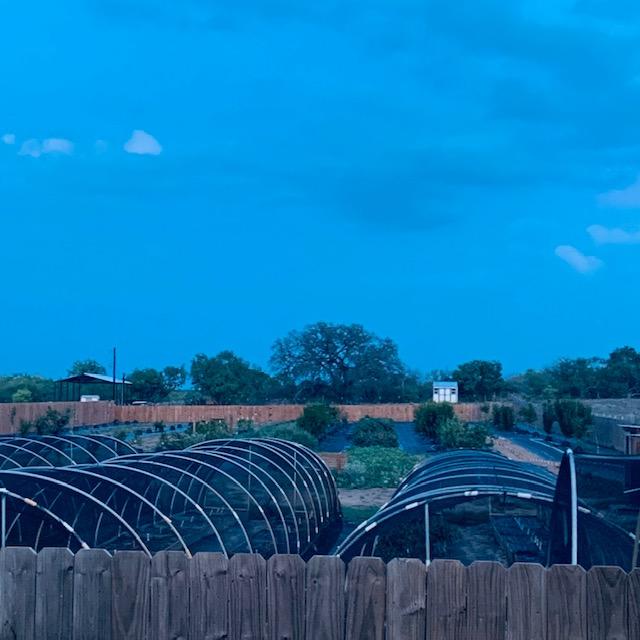 Our orchard and hoop houses
Our orchard and hoop houses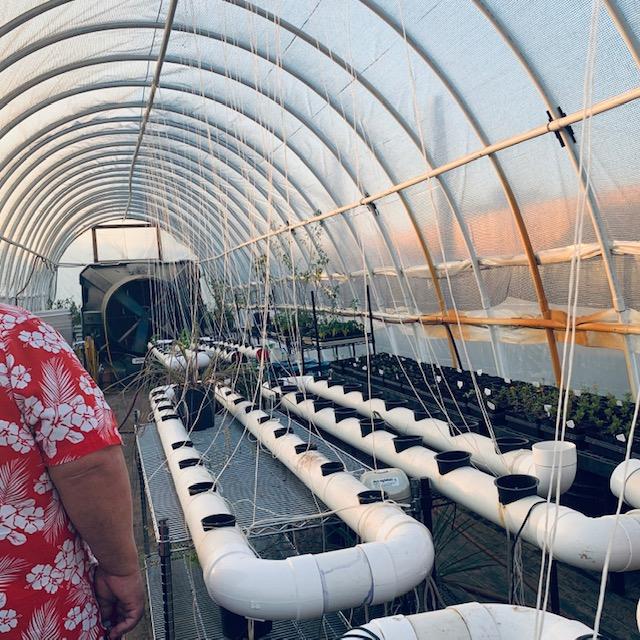 Inside our high tunnel
Inside our high tunnel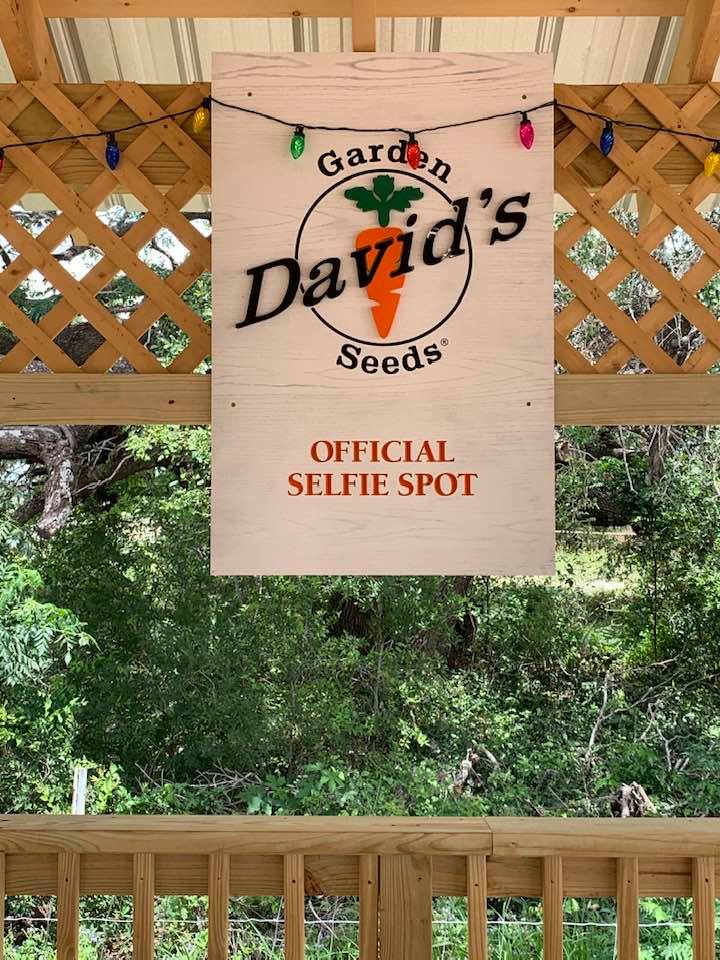 Take a selfie at our official selfie spot!
Take a selfie at our official selfie spot!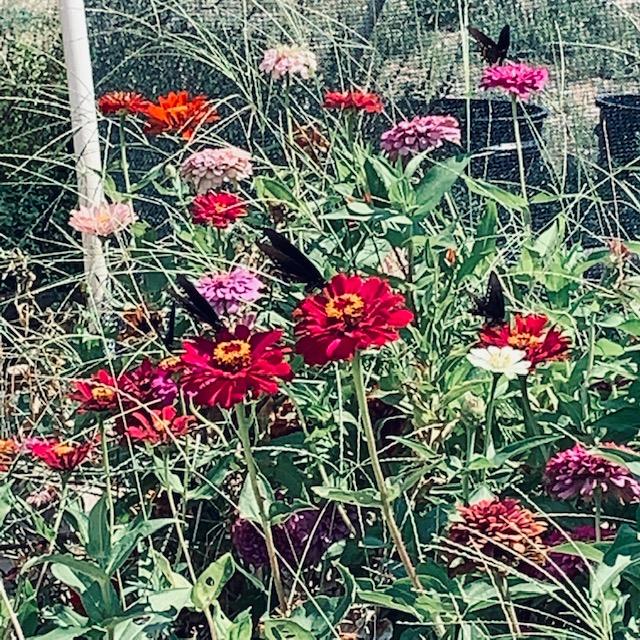 Flowers, bees, and butterflies are everywhere!
Flowers, bees, and butterflies are everywhere!